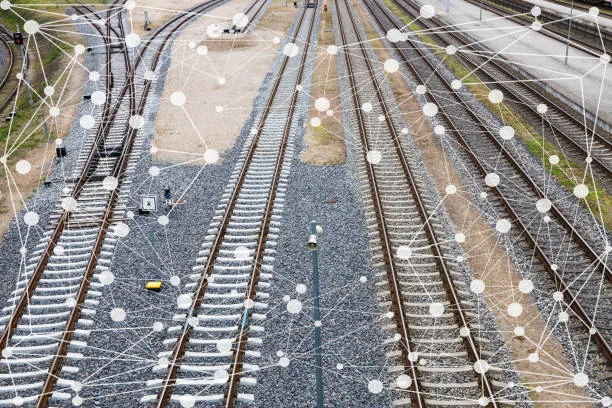In the complex world of railway operations, Railway communications or communication systems serve as the nervous system that keeps trains moving safely and efficiently across thousands of miles of track. As a rail consultant with decades of experience in signal and communication technologies, I’ve witnessed firsthand how these sophisticated networks have evolved from simple mechanical systems to cutting-edge digital platforms that form the backbone of modern rail transportation. These advancements have not only improved safety but also reshaped how operators manage schedules, resources, and passenger expectations on a daily basis.
The conversation doesn’t end here—discover more insights.
The Evolution of Railway Signaling
The journey of railway communication began with basic visual signals—flags, lanterns, and semaphores that required human operators to manually control train movements. Today’s rail consultant must understand how these humble beginnings have transformed into integrated communication networks that process thousands of data points per second, coordinating everything from train positioning to maintenance schedules. Even minor misalignments in these early systems often caused ripple effects, teaching the industry the importance of precision and redundancy.
Modern railway signaling systems operate on multiple layers of communication protocols. The primary layer involves train control systems that constantly monitor locomotive positions, speeds, and operational status. These systems use a combination of track circuits, axle counters, and GPS technology to create a real-time picture of railway operations. As any experienced rail consultant will tell you, the reliability of these communications can mean the difference between smooth operations and catastrophic delays.
Digital Transformation in Rail Communications
The advent of digital technology has revolutionized how railways communicate. Traditional analog radio systems have given way to sophisticated digital networks that support voice, data, and video communications simultaneously. European Train Control System (ETCS) and Positive Train Control (PTC) in North America represent the pinnacle of this evolution, creating standardized communication protocols that enhance safety while improving operational efficiency.
Working as a rail consultant on numerous digitalization projects, I’ve observed how these systems integrate multiple communication channels. Train operators can now receive real-time updates about track conditions, weather alerts, and schedule modifications directly in their cabs. Maintenance crews coordinate through digital work order systems that automatically update as tasks are completed. Passenger information systems pull data from operational databases to provide accurate arrival and departure information. This seamless integration reduces human error and allows rail networks to adapt quickly to sudden disruptions or emergencies.
The Internet of Things (IoT) has further expanded communication capabilities in railway systems. Sensors embedded in tracks, switches, and rolling stock continuously transmit data about component health, environmental conditions, and operational parameters. This constant stream of information allows rail operators to implement predictive maintenance strategies, reducing unexpected failures and improving overall system reliability.
Cybersecurity Challenges
With increased connectivity comes increased vulnerability. Modern railway communication systems face unprecedented cybersecurity challenges that require specialized expertise to address. As a rail consultant focusing on system security, understanding the unique threat landscape of railway operations is crucial for developing robust protection strategies.
Railway communication networks often span vast geographical areas with varying levels of physical security. Remote signal boxes, wayside equipment, and mobile communication devices create multiple potential entry points for malicious actors. The integration of operational technology (OT) with information technology (IT) systems has expanded the attack surface while creating new dependencies that must be carefully managed.
The consequences of communication system failures in railway operations extend far beyond simple inconvenience. Signal failures can lead to service disruptions affecting thousands of passengers, while compromised train control systems pose serious safety risks. This reality drives the need for redundant communication pathways, robust encryption protocols, and comprehensive monitoring systems that can detect and respond to anomalies in real-time.
Future Technologies and Trends
The future of railway communications lies in the convergence of artificial intelligence, 5G networks, and edge computing technologies. These emerging technologies promise to create even more sophisticated communication networks that can process complex operational decisions autonomously while maintaining human oversight for critical safety functions.
Artificial intelligence is beginning to play a significant role in optimizing communication efficiency. Machine learning algorithms can analyze communication patterns to predict network congestion, automatically reroute data traffic, and identify potential system failures before they impact operations. As a rail consultant working with AI implementations, I’ve seen how these systems can reduce communication latency while improving overall network reliability.
5G technology offers the potential for ultra-low latency communications that could support real-time train control applications previously impossible with existing networks. The high bandwidth and low latency characteristics of 5G make it particularly suitable for supporting autonomous train operations, where split-second communication between trains and control centers becomes critical.
Implementation Challenges and Solutions
Despite technological advances, implementing modern communication systems in railway environments presents unique challenges. Railway infrastructure often includes legacy systems that must continue operating during transition periods. Many rail networks feature a mix of old and new technologies that require careful integration to maintain operational continuity.
Environmental factors also pose significant challenges for railway communications. Train-to-wayside communications must function reliably in various weather conditions, from extreme cold to intense heat, while maintaining signal strength through tunnels, over bridges, and across remote terrain. These physical constraints require specialized engineering solutions and robust equipment designed specifically for railway applications.
The economic considerations of communication system upgrades cannot be ignored. Railway operators must balance the benefits of advanced communication technologies against implementation costs and ongoing maintenance requirements. As a rail consultant, developing business cases that demonstrate clear return on investment for communication system improvements is essential for gaining stakeholder support.
Signal intelligence in railway operations represents far more than simple train-to-dispatcher communications. Modern railway communication systems form complex networks that enable safe, efficient, and reliable transportation services. Understanding these systems requires expertise in diverse technologies, from traditional signaling principles to cutting-edge cybersecurity practices.
The role of a rail consultant in this evolving landscape involves not only technical expertise but also the ability to navigate the complex intersection of safety requirements, operational needs, and technological capabilities. As railway communications continue to evolve, the expertise required to decode these systems becomes increasingly valuable for organizations seeking to optimize their rail operations while maintaining the highest safety standards.
Curious hearts and bright minds—follow the path to more wisdom on 2A Magazine.







